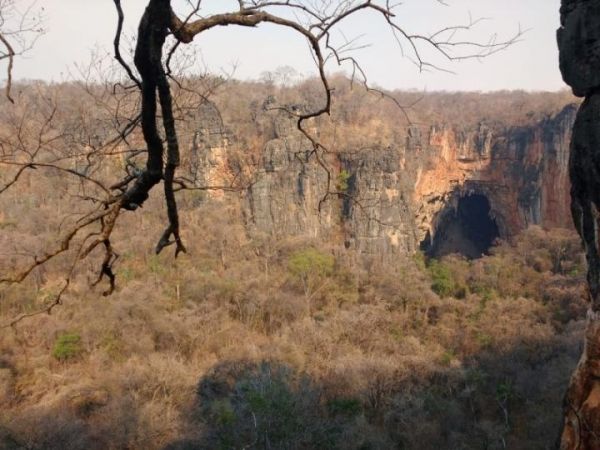Several indicators point to the adverse impacts of climate change on the planet’s vegetation, but a little-known positive fact is the existence of climate-change refugia in which trees are far less affected by the gradual rise in temperatures and changing rainfall regimes. Climate-change refugia are areas that are relatively buffered from climate change, such as wetlands, land bordering water courses, rocky outcrops, and valleys with cold-air pools or inversions, for example.
A study conducted in Peruaçu Caves National Park in the state of Minas Gerais, Brazil, with FAPESP’s support, confirmed and quantified this type of occurrence. “These refugia are excellent candidates for land management initiatives, offering a high probability of success and lower expenditure in conservation areas,” said Milena Godoy-Veiga, a PhD candidate at the University of São Paulo’s Institute of Biosciences (IB-USP) and lead author of the article on the study published in Forest Ecology and Management.
The other authors include Godoy-Veiga’s thesis advisers, Gregório Ceccantini and Giuliano Locosselli.
According to Godoy-Veiga, climate-change refugia are frequently located in karstic regions. Karst is a topography formed over time from chemical dissolution of soluble rocks such as limestone, dolomite, etc., and characterized by underground drainage systems with subterranean rivers, sinkholes, and caves, as well as dramatic above-ground features such as steep cliffs and dry gullies. “This is the landscape in Peruaçu Caves National Park, where there are ground height differences of as much as 200 meters, with the high parts projecting shadows over the low parts, and the environment comprising all the other features mentioned,” she said.
Read more at Fundação de Amparo à Pesquisa do Estado de São Paulo
Image: Dolina dos Macacos, a sinkhole in Parque Nacional Cavernas do Peruaçu. The study was based on analysis of tree rings in the species Amburana cearensis, as well as satellite images (Credit: Luciano Fioroto)


